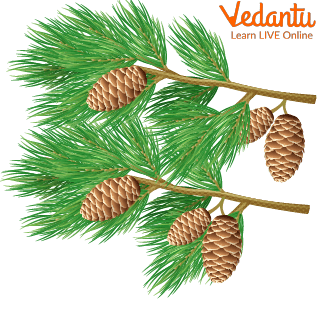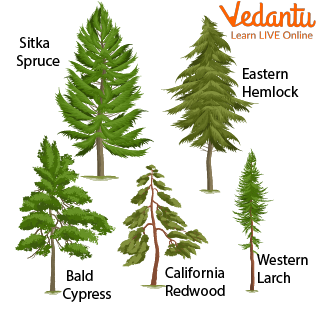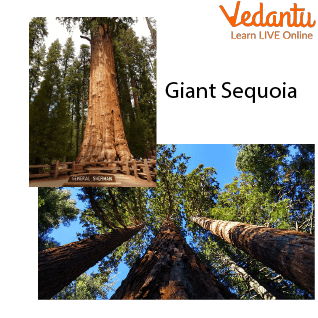




Key Characteristics and Importance of Coniferous Trees
A category of plants and shrubs known as conifers generates cones. Their seeds are carried by cones. The majority of conifers are evergreen trees or trees that have leaves all year long. Coniferous forests have tall trees with leaves as needles.
Conifers come in over 550 different varieties. Some Cedars, cypresses, firs, junipers, larches, pines, redwoods, and yews are a few of the most well-known. Conifers are the world's tallest, heaviest, and oldest living organisms. Conifers are classified into several families, with some being evergreen and others deciduous. The differing conifers' characteristics have been greatly improved over time through breeding.
Coniferous Forests
Conifers are evergreen trees and their leaves are needle-shaped. All around the planet, conifers are found. Many chilly areas, particularly the northern regions of Europe, Asia, and North America, support coniferous forest growth. Conifer species can be found throughout Asia's tropical rainforests. Others flourish in warm regions of Africa and Australia. In India, they are found in the northeastern part, in Arunachal Pradesh and Sikkim. Some common conifer plants’ examples include cypresses, firs, junipers, larches, and pines.

Coniferous Forests
Physical Characteristics of Coniferous Trees
Conifers have stems and trunks made of wood. Coniferous forests have tall trees with leaves as needles. Although some varieties have leaves that resemble scales, blades, or wedges, their leaves frequently resemble needles. The leaves' waxy layer prevents water loss. The majority of conifers have broad, shallow roots.
Instead of flowers or fruits, conifers produce cones. The majority of conifers have oval-shaped cones. The cone's outside is covered in scales. On the same tree, certain conifer species produce both male and female cones. Others have distinct trees with male and female cones. Pollen is produced by the male cones, which are smaller than the female cones. This pollen is transported to the female cones by the wind. The female cones then produce seeds beneath their scales.

Cones
Examples of Coniferous Trees
There are more than 550 types of conifer. Some coniferous tree examples include cedars, cypresses, firs, junipers, larches, pines, redwoods, and yews. The tallest, heaviest, and oldest living thing on earth are all conifers.

Different Types of Conifers
Incredible Conifers
The tallest conifers and trees in the entire world are redwoods, which are found in California. The height of some redwoods exceeds 360 feet (110 metres). The heaviest conifers are the enormous sequoias, which are also found throughout California. Sometimes they exceed 4 million pounds in weight (2 million kilograms). The tiniest conifer is a pygmy pine native to New Zealand. They only reach a height of 2 inches (5 cm).
The oldest conifers and the oldest living creatures on earth are bristlecone pines. They frequently live for three to four thousand years. They flourish in Nevada and California's dry, mountainous terrain.
Benefits Gained from Coniferous Trees
Conifer wood has been utilised by humans for thousands of years. Middle Eastern cedars were used by ancient peoples to construct large sailing ships. Longbows were manufactured by European warriors more than 500 years ago from pliable yew wood. Pine wood is still used today to build homes and furniture.
Conifers are now also planted in yards, gardens, and parks. They are raised inside as ornamental plants. Some conifer plants examples are pines, firs, and spruces; these are used as Christmas trees in North America and western Europe.
Summary
Conifers are some of the species of trees that are the oldest, tallest, and heaviest. The bristlecone pines of the desert highlands in California and Nevada are among the oldest living creatures on earth and typically live for 3,000 to 4,000 years. The redwood of coastal California is the tallest tree in the world; some redwoods can reach heights of more than 360 feet (110 metres). The second-tallest conifer and heaviest living organism on earth, the giant sequoia of California's Sierra Nevada range, is a near relative. Giant sequoias can grow to heights of more than 300 feet and weigh more than 4 million pounds (2 million kilogrammes) (95 metres). If you liked reading this topic, check out more such interesting articles on our website.

Giant Sequoia
FAQs on What Are Coniferous Trees?
1. What is the economic value of the conifer tree?
All of the world's softwood timber, which is the primary building material in temperate zones, is produced by conifers. They produce a significant portion of the annual lumber produced worldwide. Their wood is also used to make chipboard, plywood, and particleboard. Other items made from conifers include paper and plastics made from spruce wood pulp that has undergone chemical treatment, tannins from hemlock bark, and wood tars (naval storage) made from various pines.
2. Write the characteristics of the conifer tree.
Typical conifers’s characteristics include the following:
They can be found today and back in the Carboniferous.
They grow in a variety of ways, from giant trees like Sequoia (Taxodiaceae) to tiny varieties of Dacrydium (Podocarpaceae), which only reach a few centimetres in height.
Branches can be dimorphic, like in pinus, or they can be of a single kind.
The secondary wood of stems is pycnoxylic, and they have a small pith.
Tracheids with significant uniseriate or, in rare cases, multiseriate pits on their radial walls make up the secondary wood.
3. Do coniferous trees have flowers and fruits?
A common misconception is that conifers do not have flowers. However, many coniferous tree examples, such as pines and firs, show that they have small green berries on the tips of their branches in the springtime (the fruit is called a cone). These cones produce pollen and seeds but never form into flowers. This does not mean that conifers are lacking in flowers. Some types of flowering plants have evolved from gymnosperms but only after they had already been living for millions of years before new members were added to the group.









